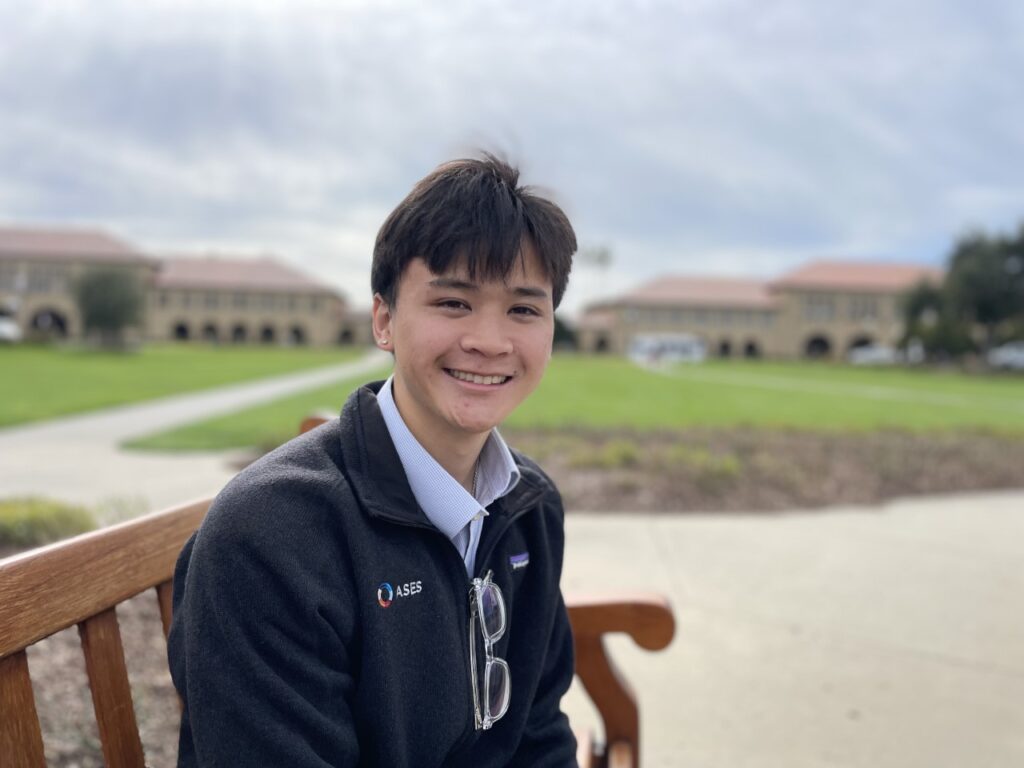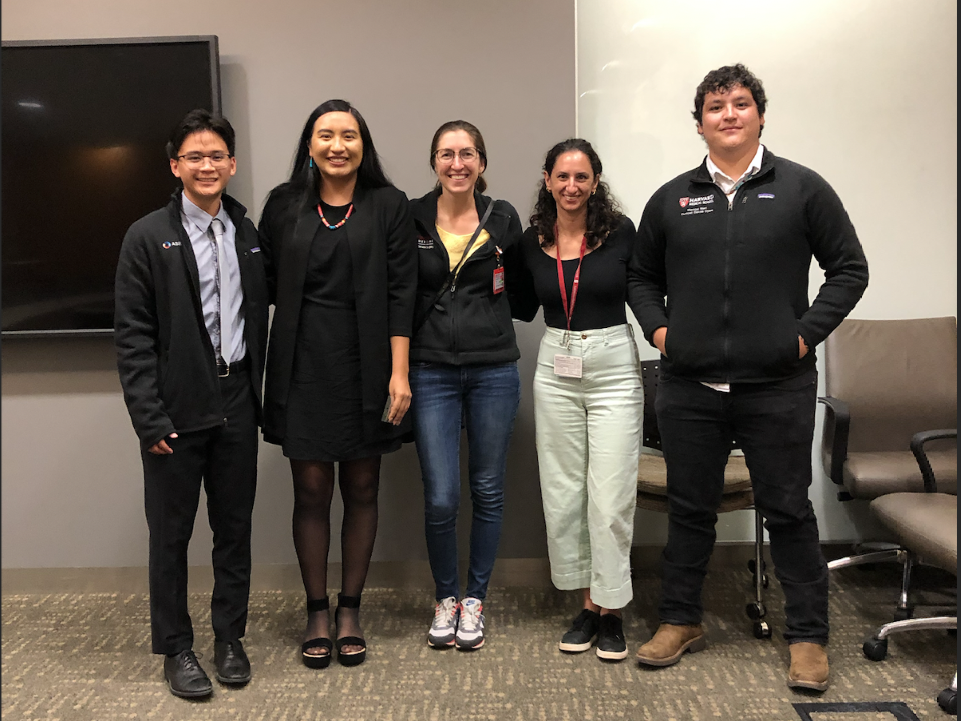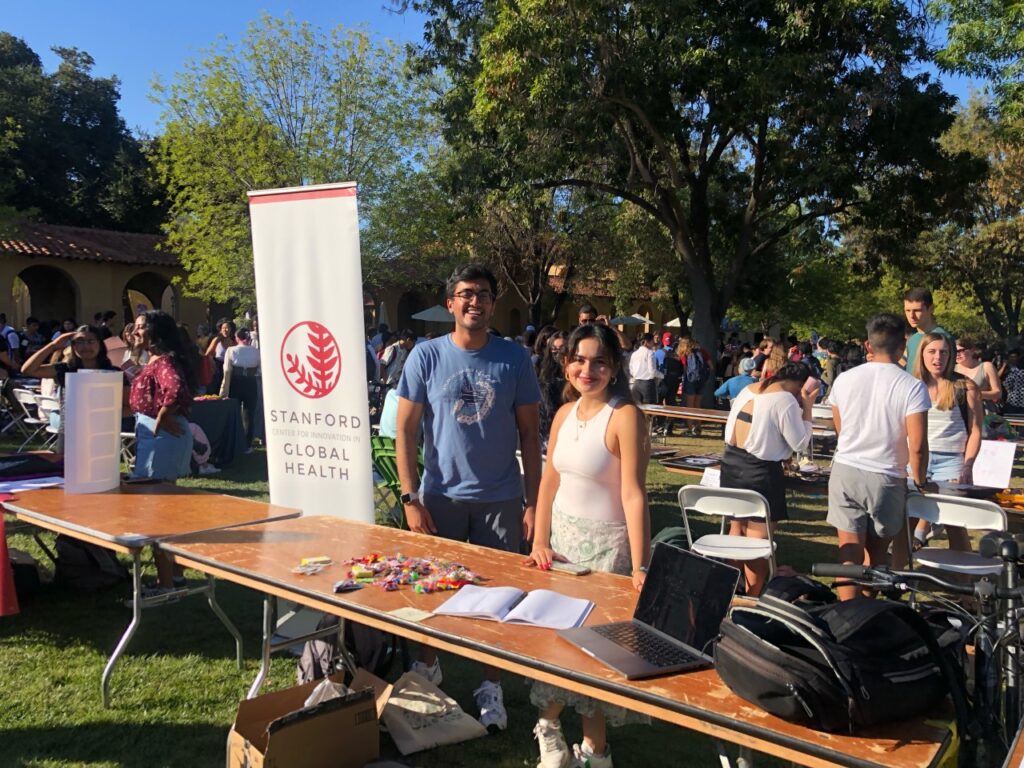Published: 03/07/2023
By Jamie Hansen, Communications Manager

Bennett Liu (’24) is co-president of Stanford’s Global Health Student Council, a student organization that brings together nearly 200 undergraduate students interested in global health. A senior studying computer science, he’s interested in mental health in global settings and how technology can be leveraged to expand access to mental health resources. He’s also passionate about promoting global health and health equity at the local level. Recently, he was lead author on a study published in JAMA Network Open, which found significant racial and ethnic disparities in access to autism resources for children across the U.S.
We met up with Bennett to discuss his experiences with global health at Stanford, along with his recent publication.
How has Global Health Student Council changed since you first got involved?
Well, I joined over Zoom during the pandemic. Since then, it’s really grown. There’s a lot of student excitement in this space, which I think reflects all the activities CIGH has been offering. The approach is very interdisciplinary, incorporating planetary health, health care, and technology, for instance. One of the coolest things about GHSC is that it draws students from all different backgrounds, not just healthcare.

Speaking of which, how did you get interested in global health as a computer science major?
When I first came to Stanford, I fell in love with entrepreneurship and startup culture—how an idea can sprout into something that has such widespread effect on people everywhere. My freshman fall, my friends and I worked on a startup together. While the startup ended up not getting VC funding, I look fondly back on those long nights we spent together grinding in cramped dorm rooms. Most importantly, I learned that while I love startups, I needed to find the problems that made me passionate and excited to solve.
I signed up for Med 232, Scaling Health Technology, and it really impacted me. I saw how I could apply my interest in scaling technologies in an area I felt passionate about. Dr. (Michele) Barry always emphasized that we should think about global health from a local perspective, and that idea resonated with me. I want to help and give back to the communities I feel closest to.
How are you combining your expertise in computer science with your interest in global health?
Through Med 232, I came to realize that computer science is a tool, a really important tool, in being able to analyze big datasets – which is so important to understanding factors impacting global health. I joined the Wall Lab the winter of my sophomore year — I was really drawn there because they are developing mobile AI solutions to track and treat autism and other aspects of child health.
I became interested in exploring where the disparities in autism care were greatest, and where this powerful new tool could be of most use. PhD student Kelley Paskov and an industrious high school intern, Soren Sutaria, found an incredibly comprehensive U.S. Department of Education dataset that included national information on students, including disabilities like autism, along with race, ethnicity, socio-economic background, and more. Dr. Wall asked if I’d be interested in analyzing and comparing this resource with a database on autism services the lab maintains. Of course, I was super interested!

How did you go about this study?
We compared the Department of Education dataset with the dataset the Wall Lab has spent the last five years developing, Gap Map, which is the most comprehensive database available of autism resources across the U.S. We looked at 530,000 school-age children with a confirmed autism diagnosis, based on government statistics, and compared the prevalence of autism in certain geographic areas to the prevalence of the 50,000 services identified on Gap Map.
I couldn’t have done it by myself – my PhD mentor, Kelley Paskov, knew a lot more about statistical methods. I initially put together an analysis, and when I shared it with the lab, some of the PhDs and postdocs pointed out flaws in my methodologies of analysis, so I had to completely start anew. I’m so indebted and grateful to Kelley (soon to be Dr. Paskov) , Dr. Wall, and the rest of the team for helping to make sure the data were pre-processed correctly. They guided and taught me how to utilize unbiased statistical models in research.
I remember there was one night when I started looking at the data and making comparisons. It was very apparent that there were these really great disparities in who had access to autism resources. I remember being so interested in the crazy results that I pulled an all-nighter, texting updates to Dr. Wall.
Tell us about your findings.
Ultimately, we found that, across the country, American Indian or Alaska Native, Black or African American, and Hispanic or Latino autistic children had access to significantly fewer resources than White autistic children.
This matters because early diagnosis and care for autism can make a huge difference in a child’s long-term outcomes, and yet we learned through our research that many diagnostic centers are severely overloaded and can’t meet local demand. Hopefully, this study can help identify places where technology can help fill gaps in autism services.
What struck you most about the study?
Well, I think the study’s limitations are really important to mention. One big limitation was related to issues in how race and ethnicity are defined in databases like the one from the Department of Education. This is a tricky debate across the U.S. For instance, Asian Americans are combined into one large category – but it’s such a diverse category, including people from India, China, the Philippines, and central Asian countries like Afghanistan. Our study had no significant findings associated with the Asian population, but I think if we were to disaggregate this group, it would be apparent that certain groups are significantly under-resourced.
Additionally, for the more minoritized populations such as the Native Hawaiian and Pacific Islander group, the data collection was too imprecise to make any definitive conclusions about their resource accessibility. It’s important that these smaller racial groups are not neglected in census data collection because they may be the most impacted by disparities in our health system.
We also got to consult with the former head of medicare, Dr. Andrey Ostrovsky, and it was really impactful to have his take on how it is equally, if not more important, to change policies to address these inequities in care. We shared our results with policymakers, which was really exciting. I hope the results will inspire some change and reallocation of resources.
How have these experiences informed your plans for the future?
I definitely want to continue my interest in tech, health, entrepreneurship, and startups, along with really understanding and trying to figure out who is most impacted by the current disparities that exist in our healthcare system. I hope to work at the intersection of research, policy, and startups, because it’s through the combination of these things that I think that change can be effectively implemented.